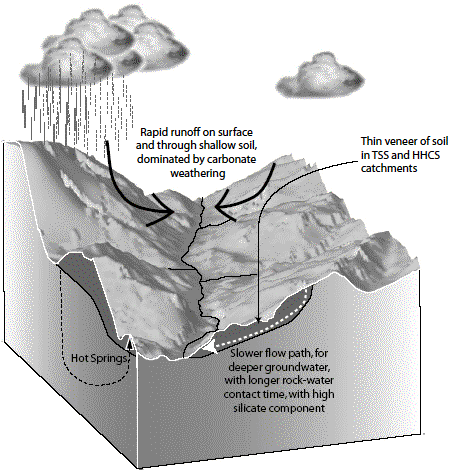
Fig. 9. Schematic of the potential sources of water to the Marsyandi. The faster dissolution kinetics of calcite means that it is more likely to respond rapidly to interaction with surface water whereas the slower dissolution kinetics of silicate minerals means that water with a longer water-rock interaction time will accumulate a larger fraction of ions from silicate weathering. In the winter when rainfall is low the base flow may be sourced from groundwater (Hendershot et al., 1992) with a higher proportion of silicate derived ions. In the summer discharge is dominated by monsoonal runoff with a greater proportion of carbonate derived ions. River waters may be affected by the hydrothermal springs reported by Evans et al. (2001, 2004) and Becker (2005) which have been corrected for in this study.
〔Tipper et al.(2006)による〔『The short term climatic sensitivity of carbonate and silicate weathering fluxes: Insight from seasonal variations in river chemistry』(2737p)から〕『炭酸塩と珪酸塩の風化の短期気候感度:河川の化学的性質における季節変動からの洞察』から〕
- Becker,J.A.(2005): Quantification of Himalayan metamorphic CO2 fluxes: Impact on global carbon budgets. Ph.D.Thesis, Dept. of Earth Sciences, University of Cambridge, Downing St., Cambridge,CB2 3EQ.
- Evans,M.J., Derry,L.A., Anderson,S. and France-Lanord,C.(2001): Hydrothermal source of radiogenic Sr to Himalayan rivers. Geology, 29, 803-806.
- Evans,M.J., Derry,L.A. and France-Lanord,C.(2004): Geothermal fluxes of alkalinity in the Narayani river system of central Nepal. Geochem. Geophys. Geosyst., 5, Q08011.
- Hendershot,W., Savoie,S. and Courchesne,F.(1992): Simulation of stream-water chemistry with soil solution and groundwater flow contributions. J. Hydrol., 136, 237-252.